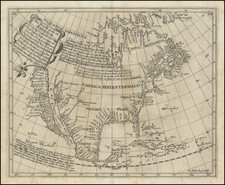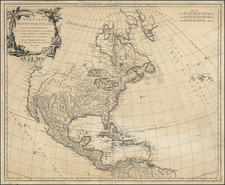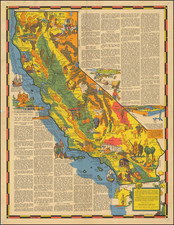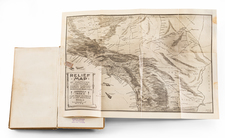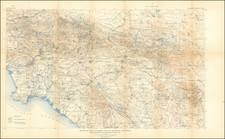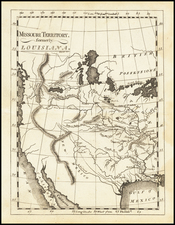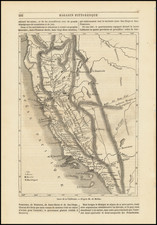Nice example of Henry Briggs map of North America, one of the most important and influential printed maps of the 17th Century. While noteworthy as the first English map to show California as an Island, the map has many other important features. While the map post dates Goos 1624 map showing California as an island, most authorities believe that the Briggs map was the source map for the Goos. Similar errors appear on both, and the East Coast and English nomenclature are similar, particularly in New England, where only the English had explored to that date. Briggs wrote of California's insularity as early as 1622. Burden surmises that the Briggs map may have either been issued first or that the maps have a common English source. If the Briggs was issued first, it is therefore the first to name Hudsons Bay, Fretum Hudson, Hudsons R, Cape Cod and De la war Bay. The map was issued in the third book of Purchas' Pilgrimes. The map gives credit to Spanish sources for the insular California theory. Vizcaino's 1602 expedition to the west coast is noted, including the first appearances of San Diego and San Clemente. The map is the first to name Santa Fe, founded in 1608 and also shows Plymouth and James Citti on the East Coast. Only one state of map is known. A very nice example of this now rare map. Perhaps the single most important map of North America of the 17th Century. Burden 214; Fite & Frememan 128-31; Leighly pl. 3, McLaughlin 2.
Henry Briggs (bap. 1561-1631) was an English mathematician. He is best known for his pioneering work on logarithms and his 1625 map depicting California as an island, the first English map to do so. He hailed from Yorkshire and attended St John’s College, Cambridge, where he studied mathematics. In 1597, he was appointed as geometry professor at Gresham College, London, where he wrote several treatises on mathematics and navigation. Inspired by the work of John Napier, Briggs focused his research on the computation of logarithms. In 1619, Briggs took up the newly-created Saville Professorship of geometry at Oxford and lived in Merton College. He died there in 1631.

